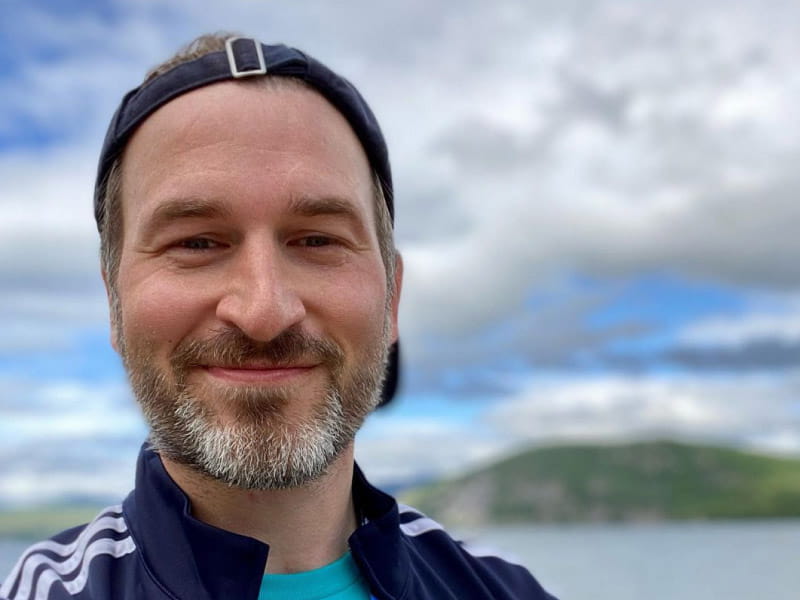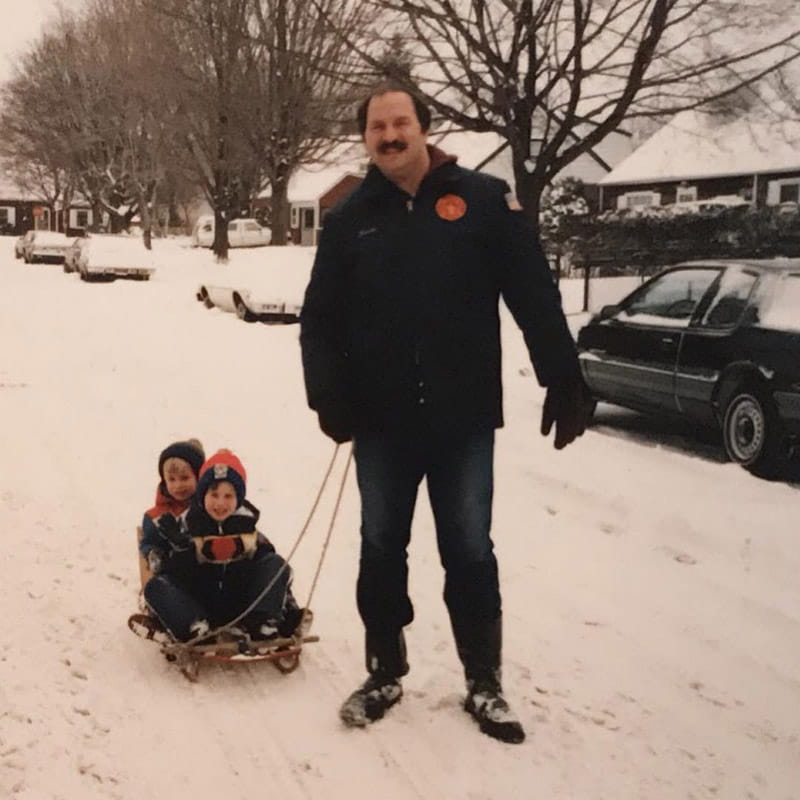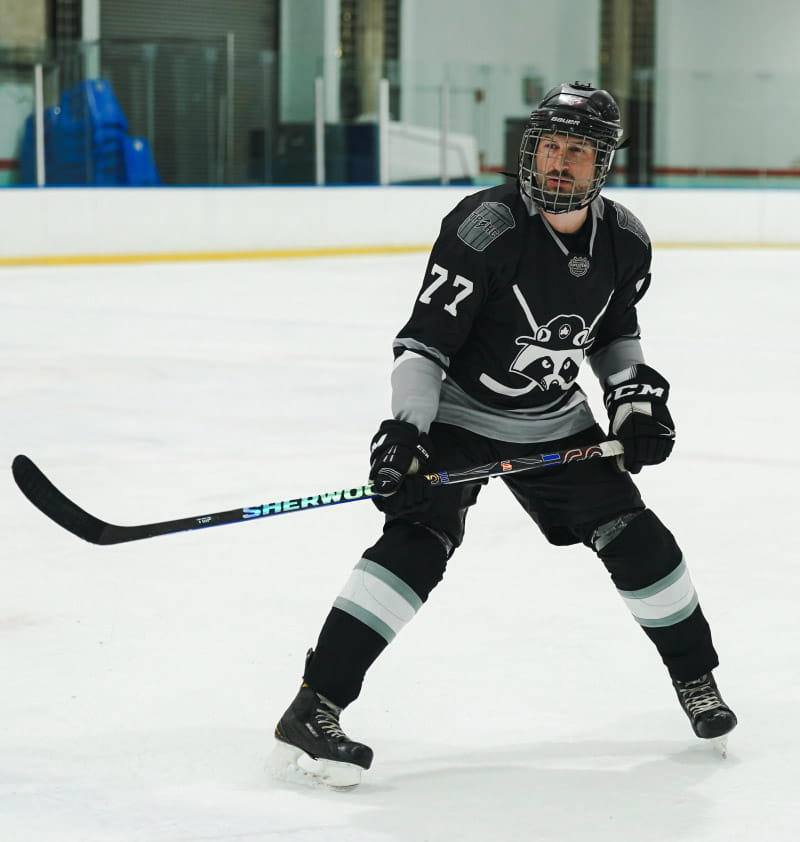Running gave him purpose after learning of inherited heart condition
By Diane Daniel, American Heart Association News

At 11, Tom Sutch was playing street hockey when he saw his dad heading out for a work trip.
Tom waved goodbye as Kevin Sutch – an EMT in New York City and commissioner of their local volunteer fire department on Long Island – drove off to a fire safety conference a few hours away.
Two days later, Tom and his sister, Karen, came home from school to find the driveway filled with cars.
Their mother pulled them aside to tell them the news. Kevin had died in his sleep while out of town. He was 39.
It didn't make sense, Tom thought. His father saved people's lives. How could he lose his own while he was sleeping?
A few weeks later, an autopsy report said the cause of death was sudden cardiac arrest possibly related to a calcified aortic valve.
Were Kevin's heart problems genetic? Might he have passed something on to Tom and his siblings – Karen and brother, Brian? They went to a cardiologist to find out.
No problems were detected.

Nearly a decade later, one of Kevin's brothers began having fainting spells. He went to see a doctor about it. He mentioned that his (and Kevin's) mother had a history of seizures.
This led to genetic testing, something fairly new at the time and far more advanced than the screening Tom and his siblings had gone through.
Kevin's brother – thus, Tom's uncle – was found to have a marker for long QT syndrome, a condition that affects the heart's electrical system.
Each heartbeat is mapped as five separate electrical waves. The electrical activity that occurs between the Q and T waves is called the QT interval. It shows electrical activity in the heart's lower chambers. A long QT interval can cause sudden, uncontrollable fast heart rhythms. The condition is rare, and not everyone who has it has dangerous heart rhythms. But when they do occur, they can be fatal.
Looking back, the Sutch family could connect other episodes where the condition had likely gone undiagnosed – from seizures experienced by several family members to the sudden death of one of Kevin's sisters at age 13. And, of course, perhaps Kevin, too.
Some 60 family members went for genetic testing. More than half tested positive, including Tom, Karen and Brian.
The doctor told the siblings that they would need to take beta blockers and have an implantable cardioverter defibrillator placed in the chest. If the device detects an abnormal heart rhythm, it delivers an electric shock to restore a normal heartbeat.
Tom got the defibrillator implanted just before returning to college for his senior year.
As difficult as that was, even worse was the litany of doctor's orders attached to the diagnosis: No strenuous activity, no heavy lifting and absolutely no contact sports. For a kid who grew up playing street hockey, then moved onto the ice, it was the end of his life as he knew it.
"I was young and energetic with nowhere to put my energy," Tom said. "I just wanted to move my body."
Needing some outlet, he went jogging for the first time in his life. It soon became a positive among all the negatives.
A couple years later, the family found a new electrophysiologist. This doctor was a runner, too, and he reassured Tom that his body wasn't as fragile as the previous specialist suggested.
"He made me feel like we could have normal lives if we do things with caution, instead of living our lives in fear of what could happen," Tom said.
In 2009, when he was 25, Tom ran his first half-marathon, training every week with childhood friends. Three years later, he ran a full marathon.
"Running made me healthier, gave me discipline and resilience and, above all, it brought me a lot of joy," he said.
On Christmas Eve 2013, Tom's defibrillator started beeping. That meant the battery was low and he'd need a new device.
Tom's recovery from the replacement surgery took longer than the original implant. His doctor advised him to not run for several months.
Tom gained weight, lost muscle mass and sunk into a depression. But he vowed to turn himself around by the following spring. To do that, he set his sights on a bigger goal: the New York City Marathon.
Tom finished the 2015 race, calling it "one of the most demanding and rewarding experiences of my life."
Three years later, he did it again.
Since then, Tom, who lives in Brooklyn and works for a television network in creative marketing, keeps upping the ante.
A few years ago, he joined a hockey league. He wears extra padding to protect his defibrillator and keeps an eye on his heart rate.
"It feels especially good because hockey was taken away from me," Tom said.

Brian, now 42, also recently started playing hockey. Both he and Karen, who is 38, are each married with three children.
Tom's mother, Kim Halpin, has since remarried. She said that although the initial news about long QT was devastating, she didn't want it to define her children.
"They could be afraid of everything, but they've been trying to go on with their lives and not be in hiding," she said. "I'm sure their father would want to see them happy."
She and Tom pointed to continued research and science, especially gene therapy, as good signs.
"There's hope that future generations won't face the same uncertainties and challenges my family faced," Tom said. "We know more about long QT and are getting better at managing it. Medication is preferred over invasive surgery."
This year, Tom turned 40.
"Even with all these personal accomplishments and proud moments, I can't help but feel the void of not having my dad there to see them," he said. "While I may never fully know the man he was, I try to live my life in a way that honors him."
Stories From the Heart chronicles the inspiring journeys of heart disease and stroke survivors, caregivers and advocates.





